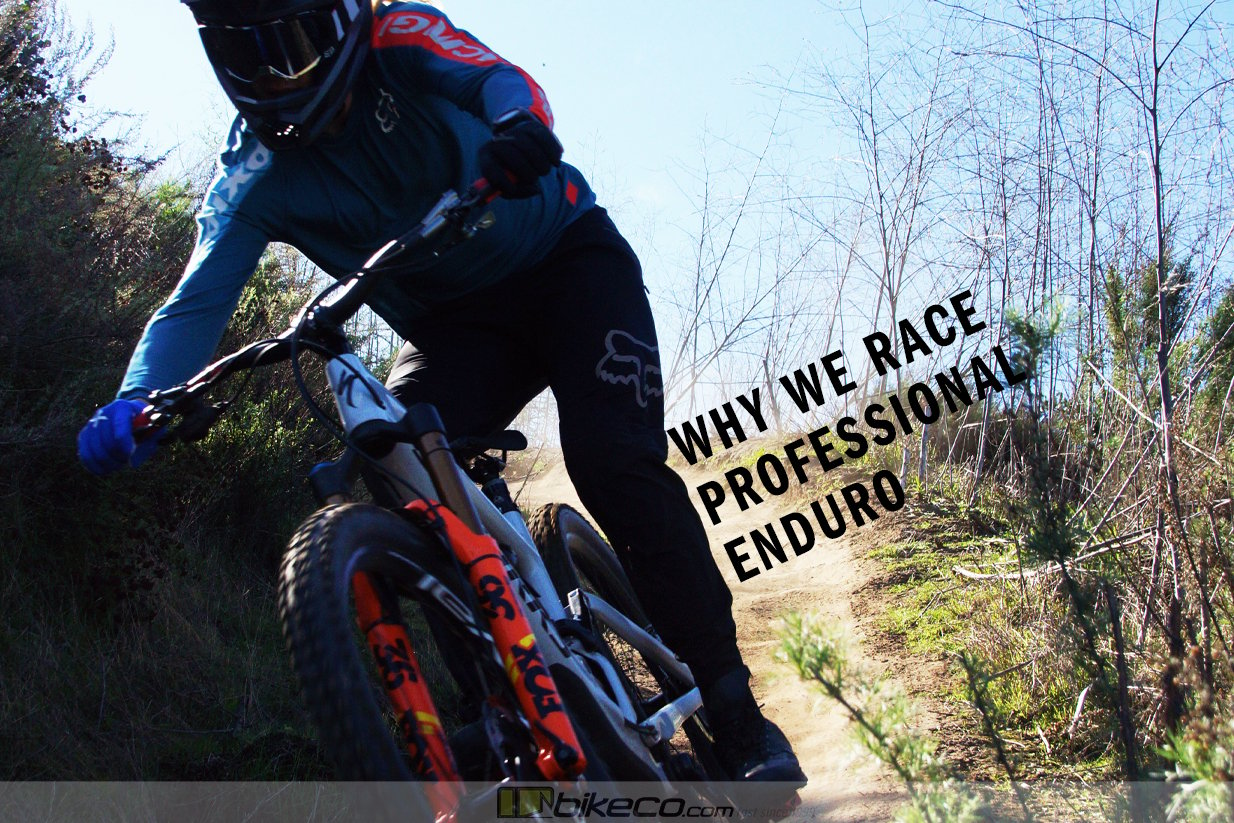
Why We Race Professional Enduro
Well its late February so it’s time to start hitting the warm up races and qualifiers. This year we thought we’d share some insight on why we race professional enduro.
A lot of aspects to professional enduro racing that have direct correlation to consumer MTB. BikeCo owner Joe Binatena’s experiences’ working with the fastest in MTB is brought back and applied to help client’s get the most out of their riding. Suspension setup and tune. Tire combos and setup (as well as tire inserts these days). Cockpit position for a variety of terrain. Wheel setup, tuning and tension. In fact one of the cornerstones of BikeCo, our Frame Prep, has its origins keeping race bikes together!
EWS events, unlike a lot of other racing, specify certain items must start and finish the entire event.
From the EWS Rulebook: 0.6.1 Only one frame, fork and one pair of wheels can be used by a racer during a race.
Pretty simple right? In fact changing any of those components can only be done with EWS’ official approval and a 3 min time penalty.
FRAME PREP
Rather than pulling up with tractor trailer full of goodies a top level EWS racer might have a similar kit that you take on a riding vacation! Some tires, a few extra bits in case you find a rock at speed, etc.
Professional enduro racers are hard on equipment. The speeds, the terrain and the level of rider aggression are a great way to simulate months or even years of trail time for the average rider. When you commit to racing at this level expect to have your gear challenged. Developing techniques that improve a bike’s performance on an EWS level is critical. Ensuring that suspension pivots work as designed is particularly important.
When pivots operate as designed the stresses through front and rear triangles are greatly minimized. Imagine how much leverage is applied, and in how many directions, to your suspension pivots. With proper frame prep a bike’s performance increases while the service interval decreases.
Frame prepped bikes not only ride more quietly on trail, far less ‘clicks or clunks’, but also translate motion substantially better to from the rider to the ground. After all, every click or clunk (any noise really) is movement. And likely it’s not an ideal movement…
On a commercial level we see a lot of “close but not quite” solutions on frame setup. Honestly, even from professional resources we see a variety of hamfisted concepts. Grease where a retainer should be used. Recently we saw a bike with fiberfix in the headset assembly. Point is, working with professional enduro racers BikeCo is trail proven at developing solutions. And these solutions come straight back from the pits to our service bay. In some cases toned down, in others just like a pro EWS racer would see.
SUSPENSION
We’re going to have future posts that finger off this write-up that go deeper into Suspension, Tires, Cockpit, Wheels, etc. But here’s a quick blast through some of the gains from racing professional enduro.
Understanding ground speed, terrain, aggression level and rider size are all critical dialing in suspension. When you see what these bikes are capable of at 100%, full-tilt boogie AND you can make them a little bit better for riders its quite the combination. Working with a variety of riders Joe is able to understand how suspension’s performance translates back to the rider. As you get closer to a real “dial in” on suspension it can become a bit counter-intuitive understanding what feels like it would work to improve handling and what does work. This understanding of both suspension performance as well as how riders articulate what they feel goes directly into our Pro Tune settings.
TIRES
You’ve probably noticed in your riding that there are less and less exotic tread designs. Maybe four different patterns will give you a huge range of performance. It’s similar racing at the top levels of enduro. So pick the pattern for the dirt and rip right? Nope. Not close…
BikeCo riders are utilizing a wider range of sidewall compounds than ever before. And tire inserts. And tire widths, but less for width and more for volume to keep rocks off rims! There’s no way to slam all that info into this post so keep an eye out (we’ll link to it from this page when it’s published) for a What We Learn Racing Tire Setup blog…
COCKPIT
How far back can you ride a specific bike? How much Body English does it take to keep control of both wheels? Are you riding in a power position to keep the bike in your hands when the terrain starts hitting back with huge impacts? Even ass geometry advances bike sizing as well as cockpit setup are still huge factors in MTB performance. Honestly they might be bigger factors these days as riders work to understand the balance of steeper seat tube angles, longer reach as well as a variety of stack options.
AHEAD OF THE CURVE
Another benefit racing with the best is being involved first hand with the product development. We’re able to stay ahead of the curve working hands on with industry leaders. Trade show release? Nah, we’ve probably seen it on trail for months! Want to know how it really works? Well chat with the team here at BikeCo.com and we’ll dial you in on the right part, at the right price, for your riding.
UNTIL NEXT TIME
Thanks for checking out Why We Race Professional Enduro. Keep an eye on our social media for extended write ups on concepts listed above. In the mean time jump around BikeCo’s blog for more build photos, how-tos, setup guides as well as the best products in MTB!
